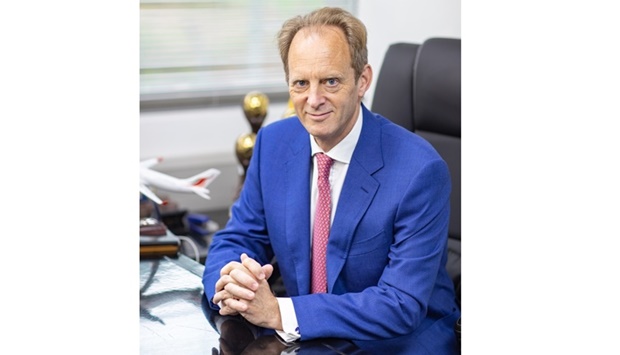| Beyond the Tarmac |
“We are open to the proposal for privatisation from the government,” Richard Nuttall, CEO, SriLankan Airlines told Gulf Times in an interview.
Sri Lanka’s President Ranil Wickremesinghe earlier proposed to privatise SriLankan Airlines as part of reforms aimed at solving Sri Lanka’s worst ever financial crisis, which has led to political unrest in the island nation.
“There are pros and cons to either form of ownership. We have been in dialogue with our ministry and the government over the different options for privatisation. We are now awaiting a final cabinet decision on the way forward,” Nuttall pointed out.
Asked whether privatisation is the way to recover from SriLankan’s losses (the airline reportedly lost about $123mn in the fiscal year 2020-2021, and aggregate losses exceeded $1bn as of March 2021), the CEO said: “As with most airlines, we lost money during Covid-19. As such, the 2020/21 figures do not reflect future expectations. Over the last 12 months or so, the airline has been operationally profitable despite all the challenges in the country.
“However, at a full profit and level, we are marginally negative. We have been affected by the fact that interest rates in Sri Lanka are now extremely high, and we are effectively paying interest on the losses of previous years. If we can use the privatisation to help us restructure or pay off some of these past debts, then we are in good shape to deliver a sustainable, profitable and growing airline to support the national economy.”
Asked whether there will be any capital infusion as part of SriLankan’s restructuring plan, Nuttall said: “The airline has operated without any funding since early 2021 when we were still deep in the pandemic. We used this time to restructure costs and review our future network. In dollar terms, we have been operationally profitable for the first six months of the current financial year which started in April, and we are still hopeful of breaking even at a full profit and loss level for the year.
“The challenges we have are around funding and growth. We still have outstanding debts from Covid times, and we have a number of engines in the shop for overhaul, and aircraft that are due to finish their leases. If we can privatise or find another source of funding, then we have an opportunity to grow.
“We believe we should ideally be at least 50% bigger within three years to meet the needs of our current network and to deliver maximum efficiencies. If funding does not become available and we need to keep living of our cash flows as at present, then this future may take a little longer.”
On SriLankan’s role in foreign exchange inflow into the island nation, as well as its role in bringing medical supplies for the country's ailing health sector, Nuttall said: “SriLankan generates the majority of its revenue from overseas markets and contributes over $700mn in foreign currency earnings to the Sri Lankan economy every year. The airline has also been a constant facilitator of tourism and foreign trade for the country regardless of the external environs and its challenges.
“In fact, SriLankan remains the largest carrier of tourists into the country and collaborates frequently with stakeholders in the local industry to promote destination Sri Lanka globally.”
He noted: “We played a key role during the pandemic by flying in critical medicines and vaccinations to the country when other airlines cut back flights. The airline has also spared no effort in supporting the embattled healthcare sector of the country and continues to airlift consignments of donated medicines and medical supplies free of freight charges. To date, we have carried nearly 60,000kg of international medical donations to Sri Lanka.”
Nuttall also touched upon his airline’s network and said: “We monitor our network on a weekly basis. Most of the growth that we talked about comes from frequency increases, but we do have three to four new destinations that we believe will work well for us and compliment the network once we have been able to grow the fleet.
“In terms of non-performing routes, we do have a couple that are struggling at present. However, we are managing to limit the losses by proactively managing capacity and we believe they will work as tourism returns.”
Asked whether SriLankan intended to acquire new aircraft either for fleet replacement or expansion in mind, the CEO said: “We operated with a fleet of 27 aircraft pre-Covid-19 and made the decision to not replace some of the aircraft that left the fleet during the pandemic. More aircraft will exit the fleet next year as leases expire, but we plan to initiate a request for proposal to lease replacement aircraft in the future in support of our operational plans.”


